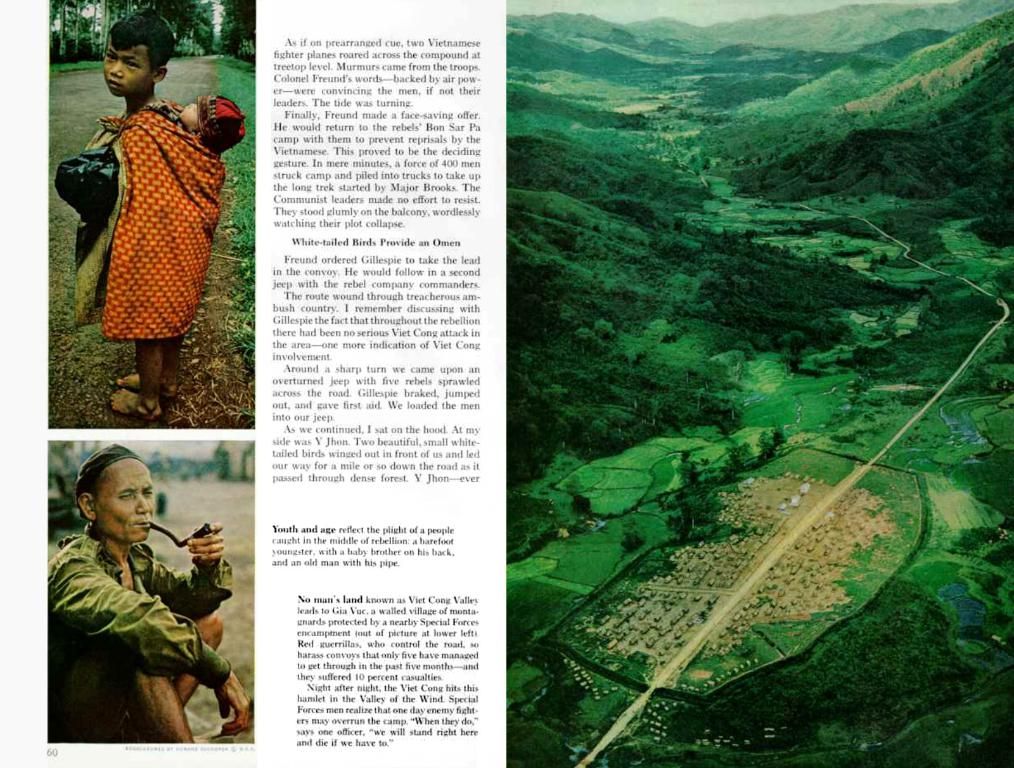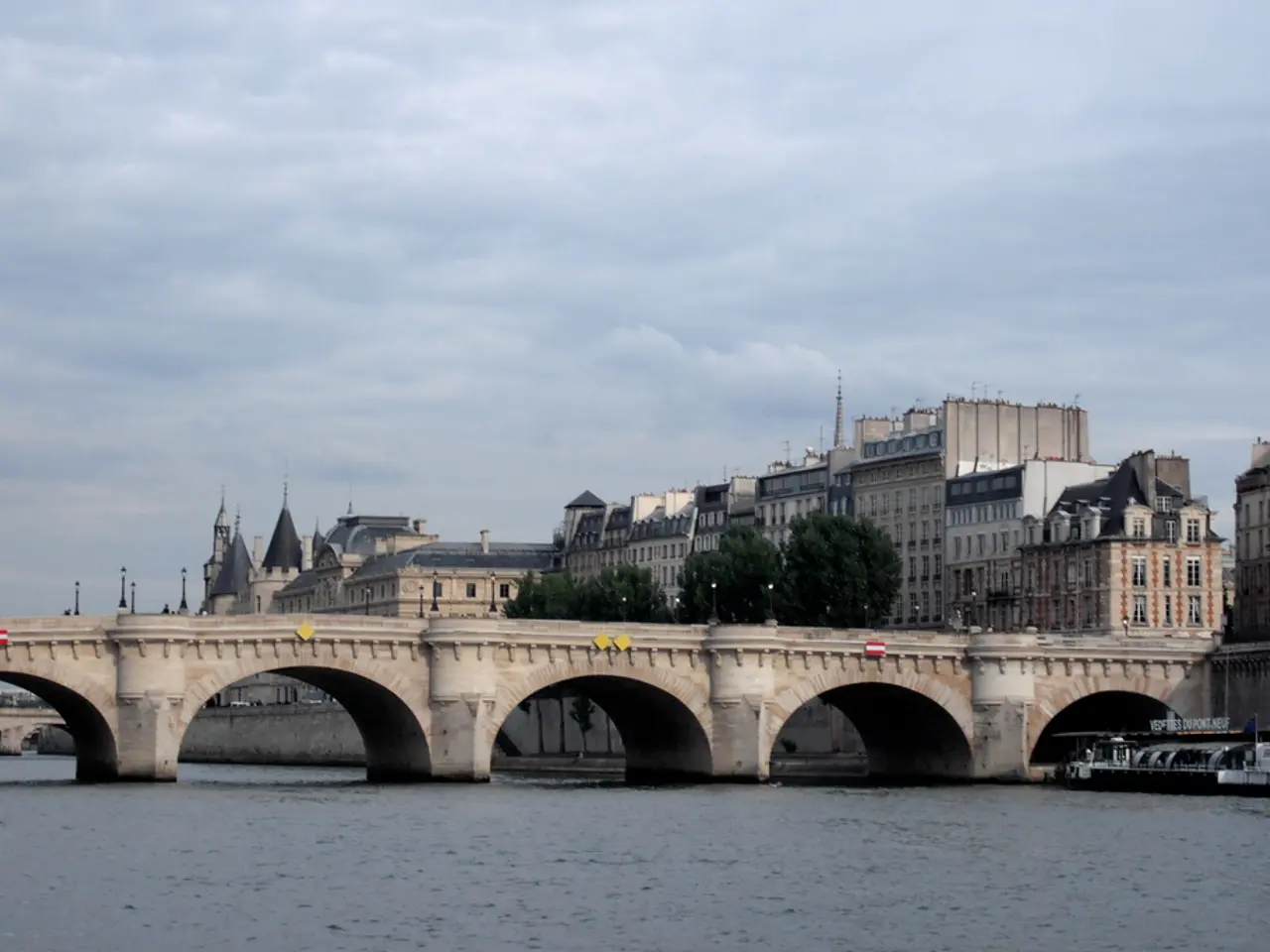Unusual weather event sparks confusion: What's been presumed as Sahara dust is actually something else in the South.
Sky Turns Milky-Gray Across Europe: Canadian Wildfire Smoke, Not Saharan Dust
By: Armin T. Linder
Munich - It's not just southern Germany that's evoking puzzled gazes. A mysterious weather event, initially thought to be the typical Saharan dust phenomenon, is causing confusion. But it turns out to be a far stranger weather spectacle.
No Saharan Dust: Smoke from Canadian Wildfires Fogging Up the Skies
The source of this unusual scene isn't Saharan dust, as meteorologist Thore Hansen from the German Weather Service (DWD) reveals on the DWD homepage. Instead, it's smoke from Canadian wildfires creating these milky, foggy skies, devoid of clarity.
These clouds, hundreds of kilometers wide, have been enveloping Germany since Pentecost Monday, leaving the sky with an unearthly glow. Besides Germany, areas in France, Switzerland, Austria, and Italy are also experiencing these effects, according to DWD. As Swiss television SRF puts it, "A ghostly Pentecost Monday" encapsulates the unusual atmosphere well. Susi Lentner from Geosphere Austria explains to ORF that there's no evidence of Saharan dust for the hazy visibility in Tyrol. Instead, it's likely that the dust is coming from the west or northwest, Lentner suggests.
Munich Takings the Top Spot in Live Air Pollution Ranking
Roland Roth, head of the Southern Weather Station in Bad Schussenried, shares insights on the formation of the milky sky over Lake Constance with Tagesschau.de: Moisture condenses in the soot particles at high altitudes, forming thin cirrus clouds that give the sky a veil-like appearance. This results in increased atmospheric turbidity and reduced visibility.
The air pollution is particularly conspicuous in Munich: The Weather Channel Germany's meteorologist and head, Jan Schenk, reports that fine dust measuring stations are issuing alerts. Surprisingly, on Tuesday afternoon, Munich topped a live ranking of major cities with the highest air pollution, beating India's capital, Delhi [5][6]. This worrisome list was dominated by Munich for two hours.
Side Notes
- Active pension, mother's pension, and co. More Money for Retirees: These Changes are Planned by the New Government
- Column by meteorologist Dominik Jung Study Warns: Supervolcano could erupt at any time - The world is unprepared for weather consequences
- History to Touch This is the largest unspoiled Baroque palace in Germany
- Off to the cool water: This swimming pool is considered one of the most beautiful in Germany
The Great Surprise: Smoke from Canada, Not Saharan Dust
The realization that Canadian smoke, rather than Saharan dust, is causing the hazy atmosphere is surprising many. As one Facebook user puts it, "Crazy, I thought it was Saharan dust, but it's smoke from Canada that's fogging up our sun." Operators of a Styrian farm write, "I've always been fascinated by Saharan dust, but the fact that smoke from Canada is now clouding our air, that's really something."
How Long Will this Phenomenon Last?
According to Thore Hansen from the DWD, there's no imminent clearing of the smoke, especially in the Alpine region. In the medium to long term, smoke from North America can reach Europe repeatedly, as long as the wildfires continue in Canada and favorable conditions persist over the Atlantic [3][4]. However, Roland Roth from the weather station in Bad Schussenried predicts improved visibility on Wednesday. On the horizon, though, Saharan dust prepares to replace this unusual weather event, according to Tagesschau.de [7]. It's going to be hotter than ever: An expert predicts a "tropical summer"
Also interesting
This content from Outbrain cannot be loaded due to your privacy settings.
(If this link doesn't work, you may need to adjust your ad blocker settings.)
Comments
References:
[1] Copernicus Atmosphere Monitoring Service (CAMS). (n.d.). Atmospheric composition. CAMS - Copernicus Atmosphere Monitoring Service. Retrieved from https://atmosphere.copernicus.eu/
[2] Copernicus Atmosphere Monitoring Service (CAMS). (n.d.). Signals and alerts | Air quality forecast. CAMS - Copernicus Atmosphere Monitoring Service. Retrieved from https://atmosphere.copernicus.eu/alerts
[3] Meteorologische Gesellschaft e.V. (n.d.). Deutsche Wetterdienst. Meteorologische Gesellschaft e.V. Retrieved from https://www.meteo.net/
[4] EEA - European Environment Agency. (n.d.). Air quality. European Environment Agency. Retrieved from https://www.eea.europa.eu/themes/air
[5] Norwegian Institute for Air Research (NILU). (n.d.). Home - NILU. Norwegian Institute for Air Research. Retrieved from https://nilu.no/
[6] World Air Quality Index (WAQI). (n.d.). Air Quality Data. World Air Quality Index. Retrieved from https://waqi.info/
[7] Deutscher Wetterdienst (DWD). (n.d.). Deutscher Wetterdienst. Deutscher Wetterdienst. Retrieved from https://www.dwd.de/DE/service/Startseite/startseite.html
Science is playing an unexpected role in the recent weather events across Europe, as smoke from Canadian wildfires, rather than Saharan dust, is causing the milky, foggy skies. This smoke is not only affecting Germany but also France, Switzerland, Austria, and Italy, leading to increased atmospheric turbidity and reduced visibility.
In the realm of environmental science, the study of climate change continues to shed light on the escalating consequences of wildfires in distant regions, such as Canada, having direct impacts on the weather patterns of far-off continents like Europe. As a result, being aware of and adapting to these changes becomes increasingly important in ensuring the health and safety of communities worldwide.








